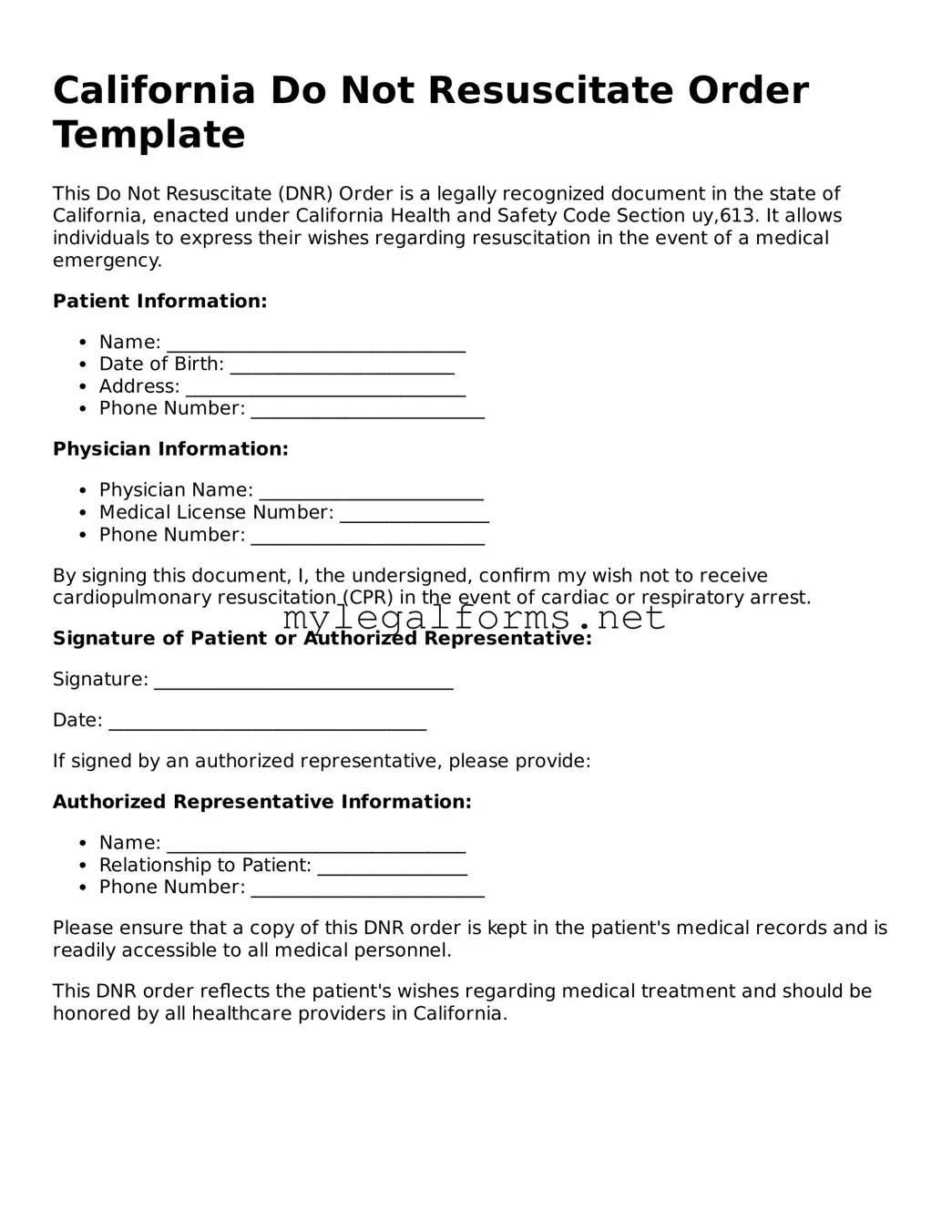California Do Not Resuscitate Order Template
This Do Not Resuscitate (DNR) Order is a legally recognized document in the state of California, enacted under California Health and Safety Code Section uy,613. It allows individuals to express their wishes regarding resuscitation in the event of a medical emergency.
Patient Information:
- Name: ________________________________
- Date of Birth: ________________________
- Address: ______________________________
- Phone Number: _________________________
Physician Information:
- Physician Name: ________________________
- Medical License Number: ________________
- Phone Number: _________________________
By signing this document, I, the undersigned, confirm my wish not to receive cardiopulmonary resuscitation (CPR) in the event of cardiac or respiratory arrest.
Signature of Patient or Authorized Representative:
Signature: ________________________________
Date: __________________________________
If signed by an authorized representative, please provide:
Authorized Representative Information:
- Name: ________________________________
- Relationship to Patient: ________________
- Phone Number: _________________________
Please ensure that a copy of this DNR order is kept in the patient's medical records and is readily accessible to all medical personnel.
This DNR order reflects the patient's wishes regarding medical treatment and should be honored by all healthcare providers in California.
